Showing Spotlights 89 - 96 of 333 in category All (newest first):
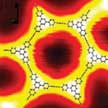 Graphyne is a little known sibling of graphene. Simulations have shown that graphyne's conduction electrons travel extremely fast - as they do in graphene - but in only one direction. That property could help researchers design faster transistors and other electronic components that process one-way current. Graphyne is distinct in being composed of sp and sp2 carbon atoms, which contrasts with graphene containing only sp2 carbon. The coexistence of sp and sp2 carbons in graphyne gives rise to unique physical properties, such as high conductivity and large carrier mobility.
Graphyne is a little known sibling of graphene. Simulations have shown that graphyne's conduction electrons travel extremely fast - as they do in graphene - but in only one direction. That property could help researchers design faster transistors and other electronic components that process one-way current. Graphyne is distinct in being composed of sp and sp2 carbon atoms, which contrasts with graphene containing only sp2 carbon. The coexistence of sp and sp2 carbons in graphyne gives rise to unique physical properties, such as high conductivity and large carrier mobility.
Oct 31st, 2019
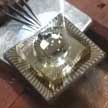 Researchers have developed a method for direct, point-of-use detection of mycotoxins in food. The method is based on the modification of electrolyte operated graphene filed effect transistors that have been specifically functionalized with aptamers by covalent binding. Demonstrating the performance of this method on Ochratoxin A, these sensors show a response time of within 5 minutes with a sensitivity down to 4 pg/ml - that is about three orders of magnitude less than accepted tolerance levels of Ochratoxin A.
Researchers have developed a method for direct, point-of-use detection of mycotoxins in food. The method is based on the modification of electrolyte operated graphene filed effect transistors that have been specifically functionalized with aptamers by covalent binding. Demonstrating the performance of this method on Ochratoxin A, these sensors show a response time of within 5 minutes with a sensitivity down to 4 pg/ml - that is about three orders of magnitude less than accepted tolerance levels of Ochratoxin A.
Oct 4th, 2019
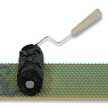 Researchers demonstrate that the amorphous carbon contaminants on CVD-produced graphene, which could greatly degrade its properties, can be removed by an activated carbon-coated lint roller, relying on the strong interactions between the amorphous carbon and activated carbon. Large-area graphene surfaces treated with this lint roller exhibit a high cleanliness of 99% with a low degree of polymer residue after transfer onto a functional substrate. This superclean graphene has extremely low contact resistance and ultrahigh carrier mobility.
Researchers demonstrate that the amorphous carbon contaminants on CVD-produced graphene, which could greatly degrade its properties, can be removed by an activated carbon-coated lint roller, relying on the strong interactions between the amorphous carbon and activated carbon. Large-area graphene surfaces treated with this lint roller exhibit a high cleanliness of 99% with a low degree of polymer residue after transfer onto a functional substrate. This superclean graphene has extremely low contact resistance and ultrahigh carrier mobility.
Sep 26th, 2019
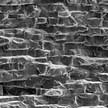 To make epoxy-graphene nanocomposites, the graphene nanosheets are commonly mixed homogeneously with the epoxy matrix. However, one of the problems that bedevils these nanocomposites is the issue of agglomeration of the nanofillers. Researchers now report that they have sucessfully tackled this dispersion problem by constructing a continuous graphene-based scaffold. The results show that the team's novel strategy boosts the fracture toughness to about 3.6 times that of pure epoxy.
To make epoxy-graphene nanocomposites, the graphene nanosheets are commonly mixed homogeneously with the epoxy matrix. However, one of the problems that bedevils these nanocomposites is the issue of agglomeration of the nanofillers. Researchers now report that they have sucessfully tackled this dispersion problem by constructing a continuous graphene-based scaffold. The results show that the team's novel strategy boosts the fracture toughness to about 3.6 times that of pure epoxy.
Sep 25th, 2019
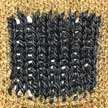 MXenes' inherently good conductivity and excellent volumetric capacitance makes them a very attractive material for fabricating textile-based, wearable electronics (e-textiles) that can be worn like everyday garments. This requires the fabrication of conductive yarns that are robust enough to be suitable for the wear and tear experienced by everyday textiles. A new study demonstrates highly conductive MXene-based yarns that can be washed and knitted just like conventional yarns - offering a potential platform technology for e-textile-based devices with tunable performance.
MXenes' inherently good conductivity and excellent volumetric capacitance makes them a very attractive material for fabricating textile-based, wearable electronics (e-textiles) that can be worn like everyday garments. This requires the fabrication of conductive yarns that are robust enough to be suitable for the wear and tear experienced by everyday textiles. A new study demonstrates highly conductive MXene-based yarns that can be washed and knitted just like conventional yarns - offering a potential platform technology for e-textile-based devices with tunable performance.
Sep 11th, 2019
 By studying flexible and transparent photodetectors based on single-layer MoS2 under the application of biaxial strain, researchers have developed atomically thin photodetectors whose characteristics can be controlled by means of an externally applied strain. This strain can be reversibly applied through the thermal expansion (shrinkage) of the substrate material, which induces tensile (compressive) biaxial stress. These results emphasize the possibilities of a new kind of electronics - straintronics - in which mechanical deformations are used to modify not only the geometry of the device, but its properties and performance as well.
By studying flexible and transparent photodetectors based on single-layer MoS2 under the application of biaxial strain, researchers have developed atomically thin photodetectors whose characteristics can be controlled by means of an externally applied strain. This strain can be reversibly applied through the thermal expansion (shrinkage) of the substrate material, which induces tensile (compressive) biaxial stress. These results emphasize the possibilities of a new kind of electronics - straintronics - in which mechanical deformations are used to modify not only the geometry of the device, but its properties and performance as well.
Aug 22nd, 2019
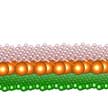 The latest addition in exciting properties of 2D materials has been superconductivity - the complete absence of resistance at low temperatures - clearly exciting for dissipationless (low-power, heating free) electronics. Researchers hypothesized that a layer of hydrogen adatoms could strongly alter the electronic and vibrational features of an atomically thin material, thereby boosting its superconductivity. This idea was tested on a monolayer of magnesium diboride, where hydrogenation was demonstrated to elevate the temperature to where superconductivity appears above a hundred Kelvin - several times higher than in the absence of hydrogen.
The latest addition in exciting properties of 2D materials has been superconductivity - the complete absence of resistance at low temperatures - clearly exciting for dissipationless (low-power, heating free) electronics. Researchers hypothesized that a layer of hydrogen adatoms could strongly alter the electronic and vibrational features of an atomically thin material, thereby boosting its superconductivity. This idea was tested on a monolayer of magnesium diboride, where hydrogenation was demonstrated to elevate the temperature to where superconductivity appears above a hundred Kelvin - several times higher than in the absence of hydrogen.
Aug 20th, 2019
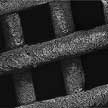 MXenes are a promising class of 2D materials with unique intrinsic physical and chemical properties, including excellent conductivity, hydrophilicity and high density when compared to graphene. 3D-printed architectures composed of MXenes are particularly attractive for energy storage applications such as rechargeable lithium- and sodium-ion batteries, lithium-sulfur batteries and supercapacitors. Researchers now have demonstrated for the first time the possibility to print three-dimensional freestanding MXene objects.
MXenes are a promising class of 2D materials with unique intrinsic physical and chemical properties, including excellent conductivity, hydrophilicity and high density when compared to graphene. 3D-printed architectures composed of MXenes are particularly attractive for energy storage applications such as rechargeable lithium- and sodium-ion batteries, lithium-sulfur batteries and supercapacitors. Researchers now have demonstrated for the first time the possibility to print three-dimensional freestanding MXene objects.
Aug 6th, 2019
 Graphyne is a little known sibling of graphene. Simulations have shown that graphyne's conduction electrons travel extremely fast - as they do in graphene - but in only one direction. That property could help researchers design faster transistors and other electronic components that process one-way current. Graphyne is distinct in being composed of sp and sp2 carbon atoms, which contrasts with graphene containing only sp2 carbon. The coexistence of sp and sp2 carbons in graphyne gives rise to unique physical properties, such as high conductivity and large carrier mobility.
Graphyne is a little known sibling of graphene. Simulations have shown that graphyne's conduction electrons travel extremely fast - as they do in graphene - but in only one direction. That property could help researchers design faster transistors and other electronic components that process one-way current. Graphyne is distinct in being composed of sp and sp2 carbon atoms, which contrasts with graphene containing only sp2 carbon. The coexistence of sp and sp2 carbons in graphyne gives rise to unique physical properties, such as high conductivity and large carrier mobility.
 Subscribe to our Nanotechnology Spotlight feed
Subscribe to our Nanotechnology Spotlight feed





